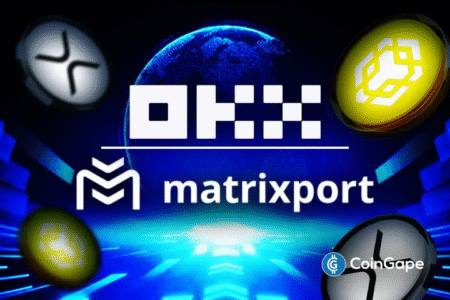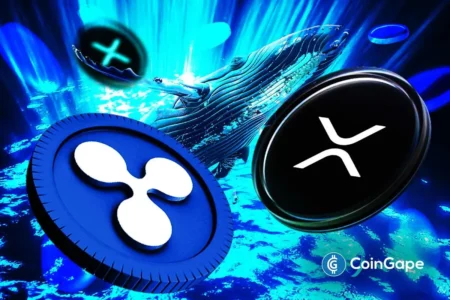The Future of Machine-Driven Commerce: Embracing Crypto-Native Payment Rails
The landscape of digital commerce is on the brink of a radical transformation driven by AI technologies. However, without a significant upgrade in payment systems, particularly outdated credit card networks, the potential of AI in commerce may be stifled. These traditional payment mechanisms are not only slow and costly but also susceptible to rising fraud, especially as we transition into a machine-first economy. Consequently, the necessity for crypto-native payment solutions has never been more crucial.
Understanding Agentic Commerce
Agentic commerce is a paradigm shift where AI-driven agents are empowered to handle complex transactions autonomously. These intelligent agents take on tasks such as searching for the best deals, negotiating prices, and executing purchases with minimal human intervention. The emergence of AI travel agents and crypto checkout extensions demonstrates the feasibility of this new model, allowing for more streamlined and efficient transactions.
Recent showcases at events like ETHGlobal New York have illustrated the enormous potential of crypto-based payment solutions. Projects like Etherius, which focuses on NFT payments, and Kyma Pay, facilitating cross-chain stablecoin transactions, highlight the diverse applications of these new technologies. The revival of the HTTP 402 “Payment Required” code as part of the x402 protocol signifies a foundational shift in how payments can be made natively on the web.
The Limitations of Traditional Payment Systems
Traditional credit cards and bank transfers are ill-suited for machines, primarily because they were designed with humans in mind. The lag in settlement times, which can span days, creates bottlenecks that hinder real-time operational capabilities. Additionally, the high fees associated with credit card transactions can make microtransaction models economically unviable, often resulting in unmanageable losses.
Credit cards operate on a trust model predicated on personal validation through billing addresses and security codes. However, AI agents work with cryptographic proofs, creating a fundamental mismatch that traditional systems cannot effectively address.
The Ineffectiveness of Tokenization
Tokenization has emerged as a solution aiming to bolster security by replacing card numbers with unique tokens. Despite reducing the risk of breaches, tokenization does little to resolve the core inefficiencies of traditional payment systems. The costs associated with Payment Card Industry (PCI) compliance remain high, and the rapid speed at which fraudulent activities can occur further renders this model inadequate. Chargebacks prove burdensome, incurring costs that can skyrocket when dealing with millions of transactions.
These tokenization structures keep developers tethered to legacy systems, incapable of supporting the pace and scale demanded by a machine-first world.
The Advantages of Crypto Payment Rails
Crypto-native payment systems, exemplified by protocols like x402, align with the operational needs of AI-driven agents. Serving fees that amount to fractions of a cent and transaction finality without chargeback complexities drastically reduce the risk of fraud and promote operational efficiency. The implementation of single-use signatures and payment channels inherently addresses the security concerns prevalent within traditional frameworks.
The incorporation of stablecoins on Layer 2 technologies further paves the way for innovative pricing strategies. Services can finally offer microtransactions, enabling seamless connections between agents without the cumbersome interfaces traditionally required.
Proving Real-World Applications
The transition to these advanced payment rails is already underway. Projects like Gloria AI have begun utilizing x402 to power hundreds of trading agents that pay for real-time financial news, showcasing the practical advantages realized through this new framework. Development teams at ETHGlobal are also exploring the efficacy of these technologies in real-world applications, providing tangible evidence that a machine-first economy is on the horizon.
Despite regulatory uncertainties and uneven adoption rates, the clear advantages presented by crypto-native payment rails make them the superior choice for developers seeking efficient solutions for agentic commerce.
Charting the Future
To realize the full potential of AI-driven commerce, a substantial upgrade in payment systems is imperative. Legacy systems fall short in speed, scalability, and cost-effectiveness. Tokenization cannot bridge these gaps. The path ahead lies in embracing crypto-native protocols like x402, which offer the scalable, secure, and real-time capabilities that machine-driven transactions demand.
As innovations continue to unfold, the transition to crypto-native payment rails will determine the pacing and direction of the future commerce landscape. The call for developers, businesses, and regulators alike is to adapt, allowing the machine-first economy to thrive.
Why Trust CoinGape: Established in 2017, CoinGape has positioned itself as a credible source for cryptocurrency news and insights. Our team combines experience in market analysis and blockchain, ensuring balanced reporting and factual accuracy. Our rigorous editorial policy and review methodology validate every article’s authenticity, from emerging blockchain projects to significant market developments.
Investment Disclaimer: Views expressed in this content reflect personal opinions and encapsulate current market dynamics. Always conduct your own research before making investment decisions, as neither the authors nor the publication can be held liable for any financial losses.
Ad Disclosure: This site may host sponsored content or affiliate links, with all advertisements clearly labeled. Advertisers do not influence our editorial narrative.
















